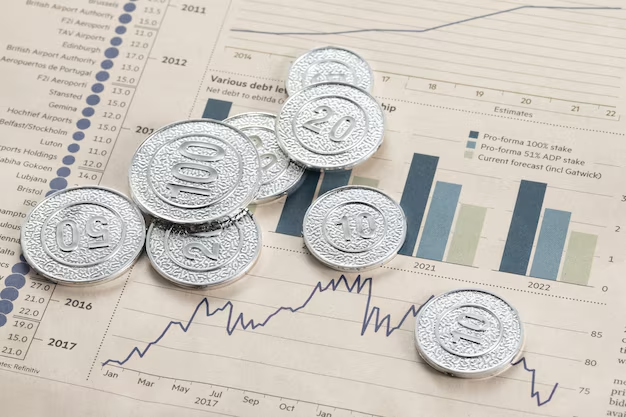Understanding Dividend Stocks: A Comprehensive Guide to Income Investing
Investing in dividend stocks is a popular strategy for those looking to generate a steady income from their investments while also participating in the potential growth of the stock market. But how exactly do dividend stocks work, and what makes them an appealing choice for many investors? In this article, we'll delve into the mechanics of dividend stocks, explore their benefits and risks, and examine the strategies that can help you make the most of this type of investment.
🌱 What Are Dividend Stocks?
Dividend stocks represent shares in companies that regularly distribute a portion of their earnings to shareholders in the form of dividends. These companies typically have a strong financial history and generate consistent profits. Dividends can be paid out on a regular basis, often quarterly, and function as a way for investors to receive a portion of the company's profits.
Types of Dividends
- Cash Dividends: The most common type, paid directly to shareholders as cash.
- Stock Dividends: Additional shares given to shareholders rather than cash.
- Special Dividends: One-time payments, usually when a company has excess profits.
Why Do Companies Pay Dividends?
- Attract and Retain Investors: Dividends make a company's stock more attractive.
- Signal Financial Health: Regular dividends signal stability and robust earnings.
- Distribute Excess Cash: Dividends can be a method to manage cash reserves efficiently.
📈 How Dividend Stocks Generate Income
Dividend stocks serve as an income source through their regular dividend payouts. Here’s how these stocks can boost your income stream:
- Passive Income: Receive income without selling shares.
- Reinvestment: Use dividends to buy more shares, leveraging compounding.
- Stability: Companies paying dividends often have stable stock prices.
The Dividend Yield
An essential concept to understand is the dividend yield, which is the annual dividend payment divided by the stock's current price. It’s a crucial metric for evaluating the potential income from a dividend stock. For example, a stock priced at $100 per share with an annual dividend of $3 would have a dividend yield of 3%.
Formula:
[ ext{Dividend Yield} = left( frac{ ext{Annual Dividend}}{ ext{Current Stock Price}} ight) imes 100% ]
🧠 Understanding the Risks of Dividend Stocks
While dividend stocks provide numerous benefits, they also come with risks. Understanding these will help you make informed investment decisions.
Market Risks
The stock market is inherently volatile. Economic downturns can impact a company's ability to pay dividends.
Dividend Cuts
Companies might reduce or eliminate dividends in poor financial health or adverse economic conditions.
Inflation
Dividend payments are fixed amounts, so inflation may erode their purchasing power over time.
📍 Key Considerations for Investing in Dividend Stocks
Before diving into dividend stocks, consider these strategic aspects:
- Company Stability: Look for companies with a history of stable earnings and dividend payments.
- Dividend Growth: Companies that increase dividends regularly can provide a hedge against inflation.
- Payout Ratio: Indicates what percentage of earnings are paid as dividends. A lower ratio suggests sustainability.
Tip: A payout ratio above 100% might be a red flag, signaling that dividends are not sustainable with current earnings.
🔍 How to Invest in Dividend Stocks
Investing in dividend stocks can be a straightforward process if you follow a few steps and strategies:
Step-by-Step Guide
- Research: Analyze company financials, dividend history, and market conditions.
- Select Stocks: Focus on sectors known for dividends, such as utilities, consumer staples, and real estate.
- Diversify: Spread investments across multiple industries to mitigate risk.
- Monitor: Keep an eye on market trends, company performance, and economic conditions.
Building a Dividend Portfolio
When constructing a portfolio, consider including a mix of:
- High-Yield Stocks: Offer immediate income but may carry higher risks.
- Dividend Growth Stocks: Lower yield but with growing dividends over time.
- Dividend ETFs: Exchange-Traded Funds that bundle dividend stocks, offering diversification.
🛠 Tips for Successful Dividend Investing
- Stay Informed: Continuously update your knowledge of market conditions and company performance.
- Reinvest Dividends: Utilize compounding for long-term growth by reinvesting earnings into more shares.
- Balance Risk and Return: Regularly assess your portfolio balance to ensure it aligns with your investment goals and risk tolerance.
📊 Visual Summary: Key Takeaways
Here’s a handy summary of practical tips and key concepts for dividend investing:
- 💡 Understand Types: Differentiate between cash, stock, and special dividends.
- 📊 Calculate Yield: Use the dividend yield to assess income potential.
- 🔎 Research: Focus on financial stability and payout ratios.
- 📚 Diversify: Invest across various sectors and consider dividend ETFs.
- 🧠 Monitor & Adjust: Regularly review and adapt your portfolio.
By understanding how dividend stocks work and implementing strategic investment practices, you can create a robust source of income while participating in the growth of the market. Whether you're building wealth for retirement or seeking regular income, dividend stocks can be a valuable component of your investment strategy.
